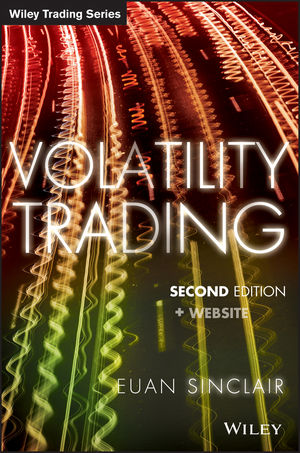1 C H A P T E R 1 Option Pricing I t is possible to trade options without any valuation model. For example, traders might buy a call option because they think the underlying will rally further past the strike than the price they have paid. This is the simplest, most direct use of options. At a level of complexity only slightly greater than this we can trade volatility without a model. Traders might sell a straddle because they think the underlying will expire closer to the strike than the value of the straddle. There are an enormous number of option positions like this where traders can attempt to profit from their opinion of the future distribution of the underlying. However, if we want to express an opinion based on the behavior of the underlying before expiration, we will need a model. A model is a framework we can use to compare options of different maturities, underlyings, and strikes. We do not insist that it is in any sense true or even a particularly accurate reflection of the real world. As options are highly leveraged, nonlinear, time-dependent bets on the underlying their prices change quickly. The major goal of a pricing model is to translate these prices into a more slowly moving system. A model that perfectly captures all aspects of a financial market is probably unobtainable. Further, even if it existed it would be too complex to calibrate and use. So we need to somewhat simplify the world in order to model it. Still, with any model we must be aware of the simplifying assumptions that are being used and the range of applicability
چکیده فارسی
1 C H A P T E R 1 قیمت گذاری اختیار معامله گزینه ها بدون هیچ مدل ارزش گذاری امکان پذیر است. برای مثال، معاملهگران ممکن است یک اختیار خرید بخرند، زیرا فکر میکنند که مبالغ اساسی بیش از قیمتی که پرداختهاند، از اعتصاب عبور میکند. این ساده ترین و مستقیم ترین استفاده از گزینه ها است. در سطح پیچیدگی فقط کمی بیشتر از این، میتوانیم نوسانات را بدون مدل معامله کنیم. معامله گران ممکن است یک استرادل را بفروشند زیرا فکر می کنند که قیمت پایه به اعتصاب نزدیک تر از ارزش استرادل منقضی می شود. تعداد زیادی از موقعیتهای اختیاری مانند این وجود دارد که معاملهگران میتوانند از نظر خود در مورد توزیع آتی پول زیربنایی سود ببرند. با این حال، اگر بخواهیم بر اساس رفتار زیربنایی قبل از انقضا نظری را بیان کنیم، به یک مدل نیاز خواهیم داشت. مدل چارچوبی است که میتوانیم از آن برای مقایسه گزینههای سررسید، موارد زیربنایی و اعتصابهای مختلف استفاده کنیم. ما اصرار نداریم که به هیچ وجه درست یا حتی بازتابی دقیق از دنیای واقعی است. از آنجایی که گزینهها بسیار اهرمی هستند، شرطهای غیرخطی و وابسته به زمان بر روی موارد زیربنایی، قیمتهای آنها به سرعت تغییر میکند. هدف اصلی یک مدل قیمتگذاری، تبدیل این قیمتها به یک سیستم آهستهتر است. مدلی که تمام جنبههای یک بازار مالی را کاملاً در بر بگیرد، احتمالاً دست نیافتنی است. علاوه بر این، حتی اگر وجود داشته باشد، برای کالیبره کردن و استفاده بسیار پیچیده است. بنابراین ما باید جهان را تا حدودی ساده کنیم تا بتوانیم آن را مدل سازی کنیم. با این حال، با هر مدلی، باید از فرضیات سادهکنندهای که استفاده میشود و دامنه کاربردپذیری آن آگاه باشیم
ادامه ...
بستن ...
Author(s): Euan Sinclair(auth.)
Year: 2013
ISBN: 9781118347133,9781118662724
ادامه ...
بستن ...










